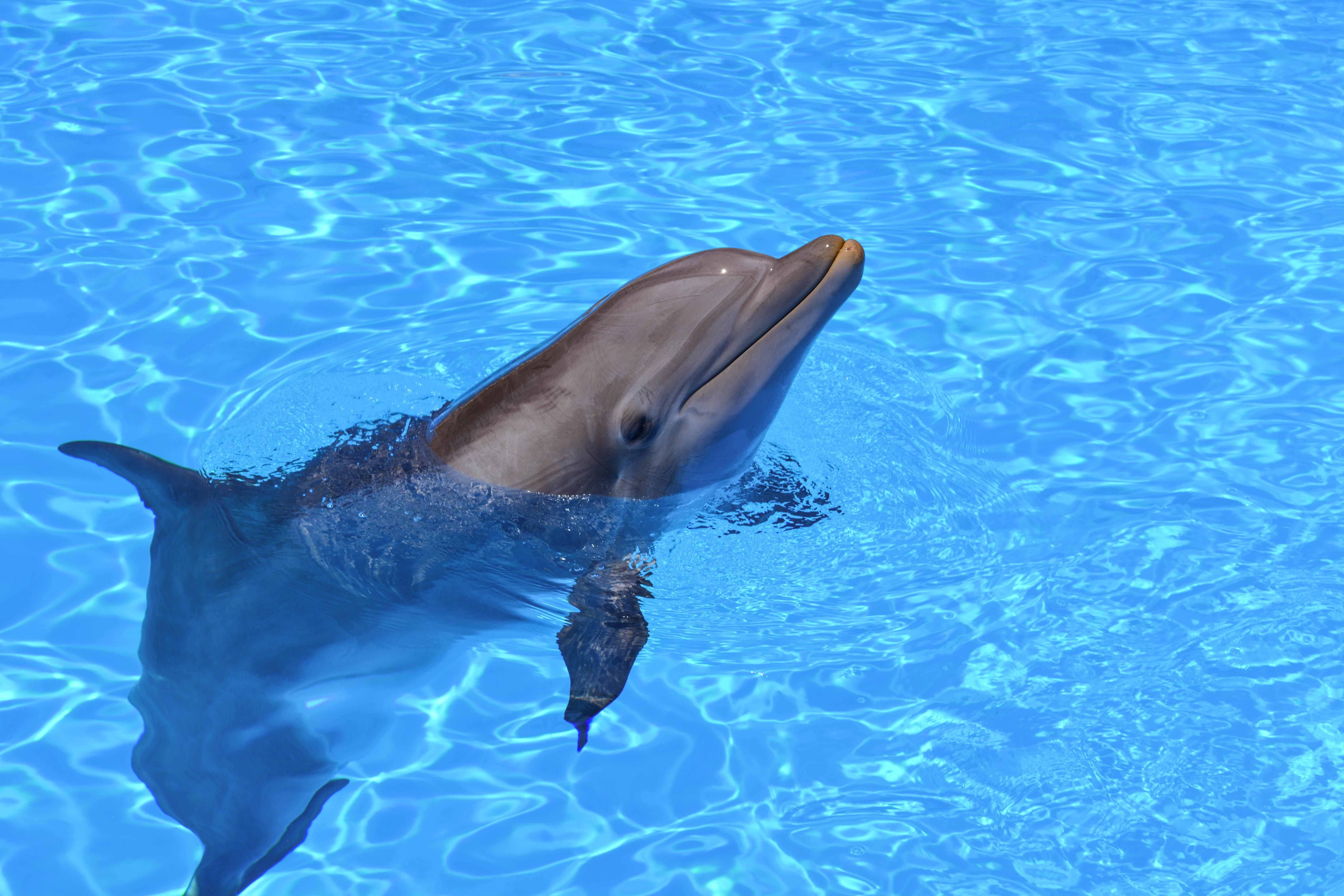I went swimming with dolphins on vacation—and why I’ll never do it again
Written by: Joe Loria, Meat Reduction Campaign Manager, World Animal Protection, US
I was 11 when my family decided to go on a cruise through the Mexican Riveria. It was beautiful, stopping in ports along the Baja Peninsula and the western coast of Mexico. The day before we were expected to dock at Puerto Vallarta, my dad approached my sister and me about an excursion he had booked after seeing it in a brochure in the ship's lobby.
Knowing how much I've always loved animals, he was excited to share that he had signed us up to swim with dolphins.
My parents were avid scuba divers, and I grew up watching homemade tapes of their adventures in the sea. One of my favorites is of them with wild dolphins in the Caribbean. I also was obsessed with Animal Planet, watching shows like The Jeff Corwin Experience.
Needless to say, I was pretty much a wildlife expert at the age of eight. However, I wasn't scuba trained and knew this was the closest I would get to swimming with these beautiful and intelligent animals. It was also just two years after we had gone on a family trip to the Bahamas, and I missed the opportunity to swim with dolphins there, so I didn't want to pass on the chance to do it finally.
That night all I could think about was dolphins. What did their skin feel like? If I went underwater with them, would I hear their high-pitched clicks, communicating with one another? How big are they in real life? I pondered for hours about the animals I would meet the next day, just filled with pure excitement.
The following day, I woke up, and we boarded a tiny bus to the dolphin park. We signed some forms and put on wetsuits. I felt like my dad in those homemade scuba videos, ready to swim with marine life.
As I approached the water, I suddenly realized that these tiny pools were where these animals, larger than most men I know, spend their entire lives.
However, I tried not to focus too much on this and enjoy myself. That was at least until things took a turn. I got in the pool and touched one of the dolphins – their skin felt like smooth vinyl flooring, but they had visible scarring on the tips of their noses from rubbing along the concrete edges of the pool. I then noticed a few even had open wounds that appeared to be recent.
Making matters worse, one of the dolphins bumped a woman, and the trainers immediately called the dolphin to the edge of the pool and demanded that we all vacate the water. This was when I witnessed a trainer take their foot and step on the dolphin's nose, forcibly closing the animal's mouth. That was it for me. I never got back in the pool, let alone ever went swimming with dolphins again.
Now I cannot say that all dolphin swimming experiences treat their animals like this, but I can say that the cruelty in swimming with these intelligent beings is inherent. While I thought dolphins were social creatures who always smiled and wanted to swim with us, I have since learned that this isn't the case. Dolphins are wild animals who deserve much more than a tiny swimming pool. They deserve an entire ocean.
You see, I'm an animal lover, and often we're the ones who don't even realize that our passion for these beautiful beings is what causes so much of their pain and suffering. I never considered the cruelty of keeping dolphins in captivity. The thought of them being taken from their families, spending their lives in an unnatural setting, being forced to entertain for some frozen fish, and living a life of misery never crossed my mind.
It's funny how we look back on things. I've recently asked my parents about this experience, especially since their love and appreciation for marine life has only grown deeper. My dad says he knew even back then that it didn't feel right bringing us to swim with dolphins but did so because he thought my sister and I would love it. He just wanted us to share his love of the ocean and all who call it home. Fortunately, now my family takes trips where we observe wildlife safely and respectfully. We've gone on seal walks in the winter and whale and dolphin watching trips in the summer.
For my birthday last May, my partner and I took a trip to Cape May, New Jersey, where we saw a pod of wild dolphins. They were jumping in the waves and swimming together in a pod as a family. It made me think about the dolphins trapped in that pool who were forced to entertain animal-loving tourists like I used to be. I wondered if those dolphins were still alive.
I've since taken my love for animals to the next level and now advocate for their wellbeing.
I share resources on why people should not support this cruel industry and encourage them to watch powerful documentaries like The Cove and Blackfish. Education is important because when we know better, we do better – and I believe the animals we love deserve better.
Have you got something to say? Want to share your thoughts and experiences with the world? Submit a post to Conversations today.